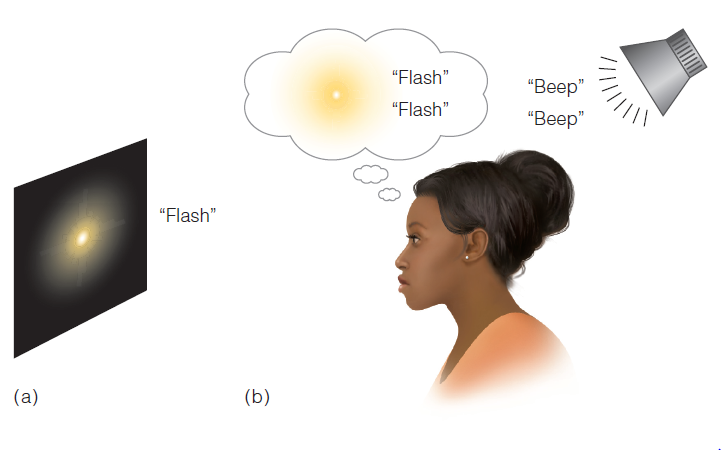proximity in time
1/39
Earn XP
Description and Tags
sounds that occur in rapid succession usually come from the same source
Name | Mastery | Learn | Test | Matching | Spaced |
|---|
No study sessions yet.
40 Terms
Auditory Space
surrounds an observer and exists wherever there is sound
Azimuth coordinates
sound localization positioned left to right
Elevation Coordinates
sound localization positioned up and down
Distance Coordinates
sound localization positioned from observer
Where sound localization is most accurate
In front !
Location cues are contained in the receptor cells
False
Binaural cues
cues to sound location that involve both ears working together
interaural time difference (ITD)
the difference in time between a sound arriving at one ear versus the other
Interaural level difference (ILD)
the difference in level (intensity/loudness) between a sound arriving at one ear versus the other
What is an acoustic shadow?
The shadow created by the head that decreases the level of high-frequency sounds on the opposite side of the head (doesn't occur for low-frequency sounds).
What is the basis of the localization cue of interaural level difference?
The acoustic shadow.
cone of confusion
region in the space around you where sounds originating from different locations can produce identical auditory cues, making it difficult for the brain to accurately locate the source of the sound.
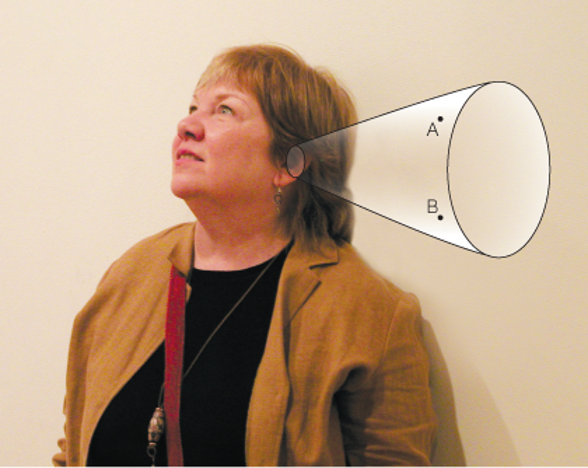
monaural cue
cue to sound location that requires just one ear
What affects the intensities and frequencies of sound information in one ear?
Pinna and Head
What sound differences do ILD and ITD compare ?
Positional Differences (Azimuth)
spectral cues are
changes the volume across frequency spectra
Jeffress Neural Coincidence Model
Neurons are wired so they each receive signals from two ears

coincidence detectors
neurons that fire most when they receive input from both ears at the same time
primary auditory cortex (A1)
the region of the superior temporal lobe whose primary input is from the auditory system, involved in locating sound
posterior belt area (P)
involved in locating sound; location of sound
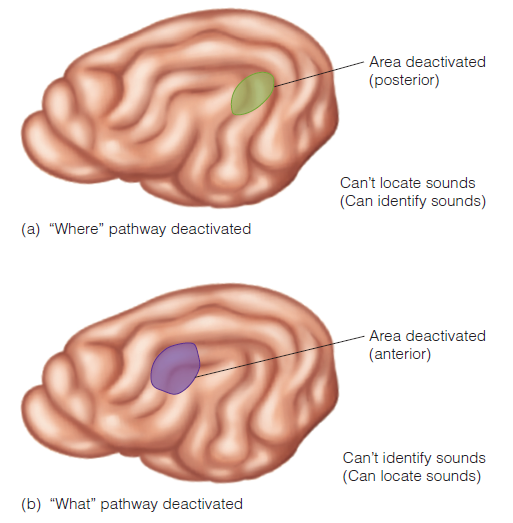
anterior pathway (A)
involved in perceiving sound; identity of sound
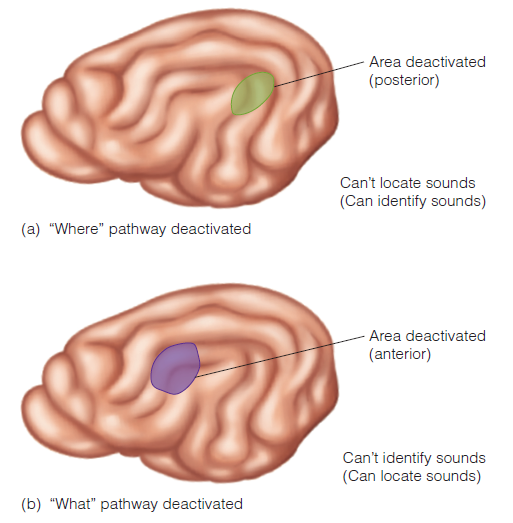
direct sound
sound that reaches the listener's ears straight from the source
indirect sound
sound that is reflected off of environmental surfaces and then to the listener
more direct sound here
outside
more indirect sound here
inside
reverberation time
The time it takes for a sound produced in an enclosed space to decrease to 1/1,000th of its original pressure.
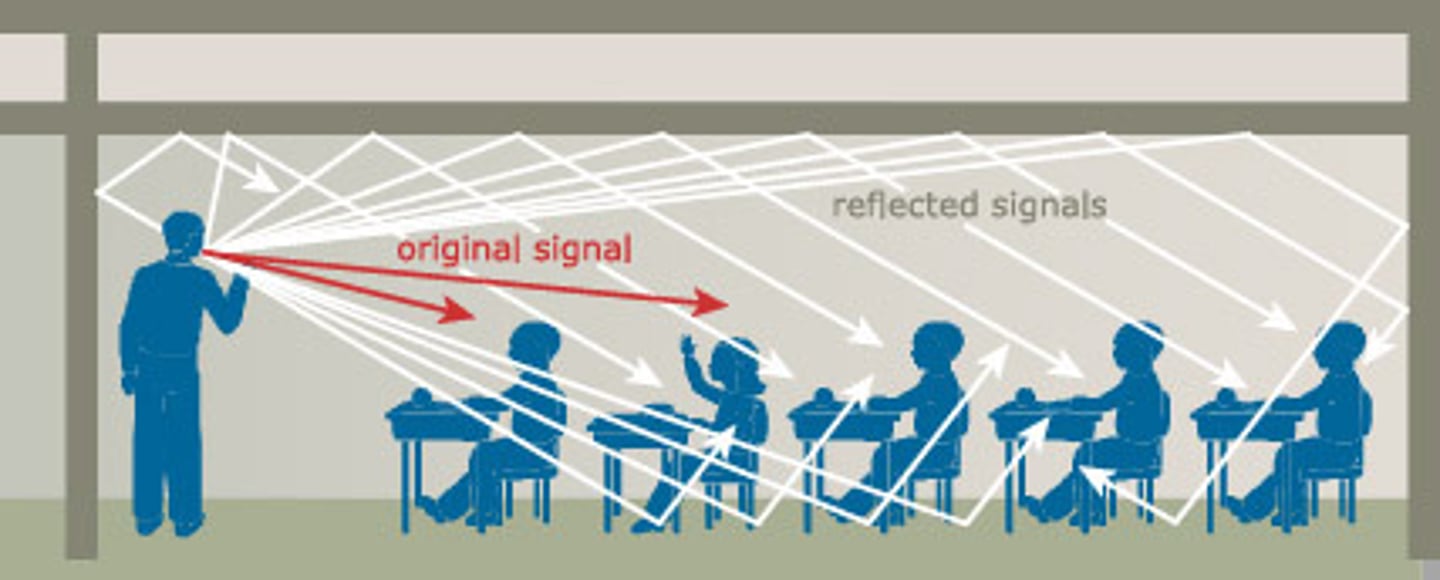
intimacy time
Time between when sound leaves its source and when the first reflection arrives. Best time is around 20 ms
bass ratio
ratio of low to middle frequencies reflected from surfaces
-high bass ratios are best
spaciousness factor
the fraction of all of the sound received by a listener that is indirect sound
auditory scene
the array of all sound sources in the environment
auditory scene analysis
process by which sound sources in the auditory scene are separated into individual perceptions
onset time
sounds that start at different times are likely to come from different sources
location
a single sound source tends to come from one single location and move continuously
similarity of timbre and pitch
similar sounds are grouped together
Timbre
quality of sound
Precedence effect
When sound is presented first in one speaker and then in the other, with enough time between them, they are heard separately, one after the other. (b) If there is only a short delay between the two sounds, then the sound is perceived to come from the lead speaker only.
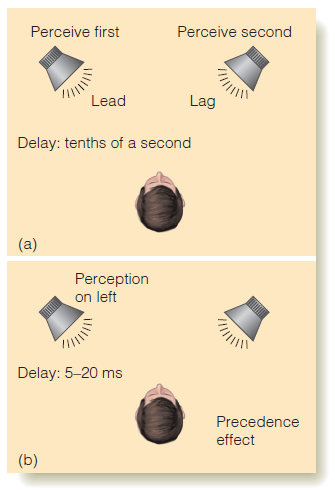
fast alternation results in
segregation into high and low streams
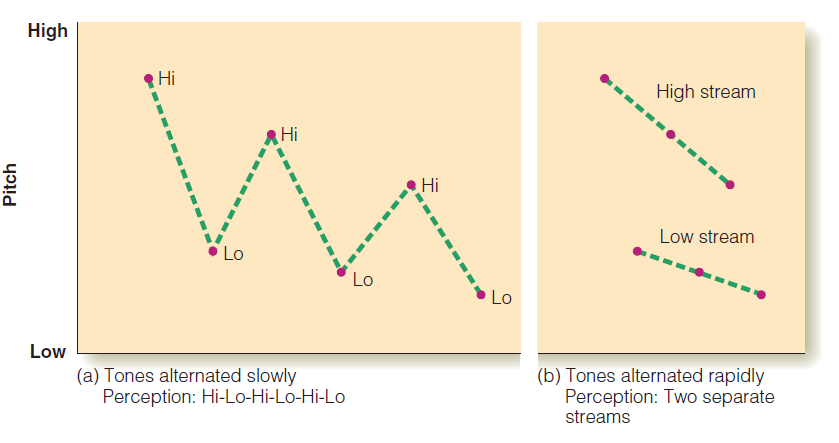
Auditory continuity
sounds that stay constant or change smoothly are usually from the same source.

Visual capture or the ventriloquist effect
an observer perceives the sound as coming from the visual location rather than the source for the sound
The two-flash illusion
A single dot is flashed on the screen. When the dot is flashed once but is accompanied by two beeps, the subject perceives two flashes
